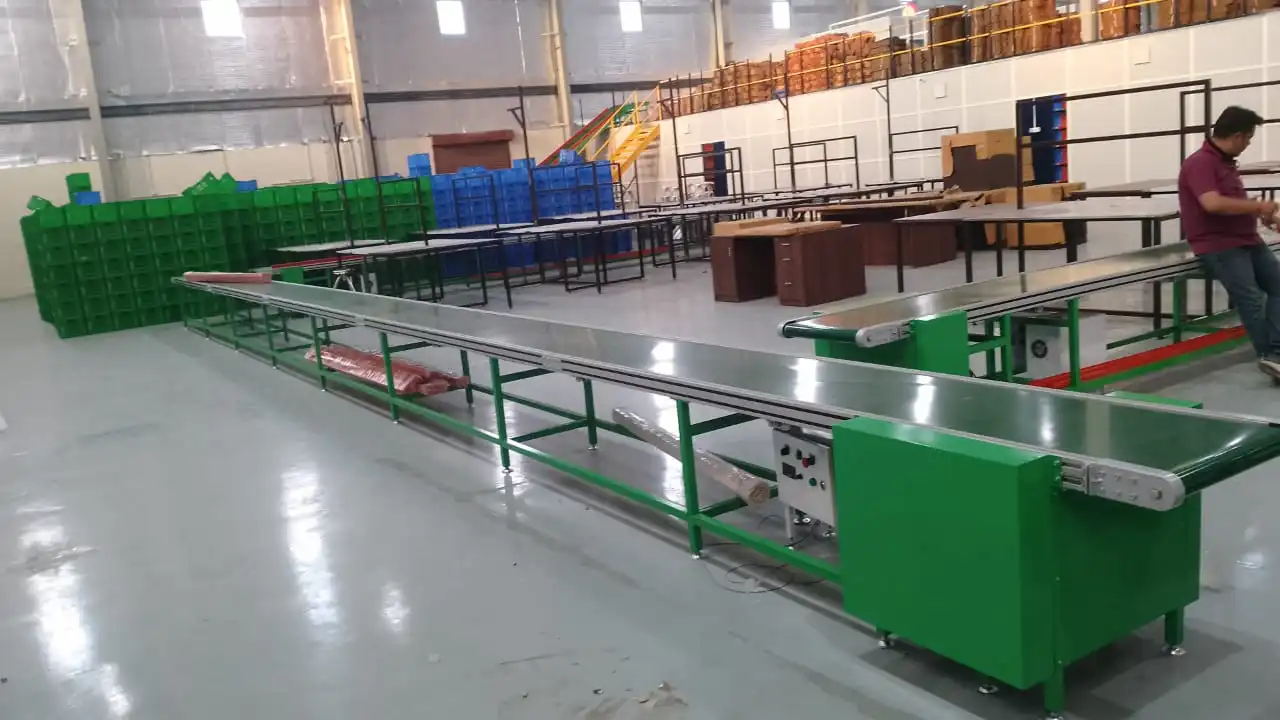At Yontro, we understand the importance of a smooth-running production line. Conveyor belts are the workhorses of many manufacturing facilities, silently transporting materials throughout the assembly process. However, even the most durable belts eventually succumb to wear and tear. Here at Yontro, a leading manufacturer of both conveyor belts and PCB assembly machines, we want to empower you to identify when it’s time to replace your conveyor belts, preventing costly downtime and ensuring optimal production efficiency.
1. Visible Signs of Conveyor Belts Degradation:
Regular visual inspections are crucial for identifying potential issues with your conveyor belts. Here’s what to look for:
- Cracks, Tears, and Delamination: Over time, the constant flexing and friction of conveying materials can cause cracks to develop on the belt’s surface. These cracks can worsen and lead to tears, especially if the belt encounters sharp objects. Delamination, where the layers of the belt begin to separate, is another sign of wear and tear.
- Excessive Wear on Edges: The edges of your conveyor belt are particularly vulnerable to wear. If you notice significant fraying, gouging, or chunking on the edges, it’s a strong indicator that the belt is nearing the end of its lifespan.
- Loss of Belt Flexibility: A healthy conveyor belt should have a good degree of flexibility. If the belt has become stiff and brittle, it’s more prone to cracking and tearing.
2. Tracking Issues:
A properly tensioned and aligned conveyor belt should track straight and true. If you notice your belt wandering to one side or the other, it can lead to:
- Product Damage: Material can become misaligned or even fall off the belt if tracking is off. This can damage delicate components or disrupt the entire production process.
- Increased Maintenance Needs: Misaligned belts put additional stress on the conveyor system’s components, leading to premature wear and tear on bearings, rollers, and the frame itself. This translates to more frequent maintenance and potentially higher repair costs.
3. Material Buildup and Cleaning Challenges:
Over time, material residue can build up on the belt’s surface. This can be particularly problematic in applications involving food, chemicals, or sticky substances. Here’s why it matters:
- Reduced Conveyor Efficiency: Buildup can increase friction, causing the belt to require more power to operate and potentially slowing down production.
- Hygiene Concerns: In applications with strict hygiene requirements, such as food processing or pharmaceuticals, even a small amount of buildup can pose a contamination risk.
- Cleaning Difficulties: Heavily built-up belts can be extremely difficult to clean effectively. This can lead to increased downtime for cleaning and potentially require harsh chemicals that could damage the belt itself.
4. Frequent Belt Breakdowns and Increased Maintenance:
As conveyor belts age, they become more susceptible to breakdowns. Here’s what to watch out for:
- Increased Need for Belt Repair: If your belts are experiencing frequent repairs, such as patching or splicing, it’s a sign that they’re nearing the end of their useful life.
- Rising Maintenance Costs: The ongoing cost of repairs and maintenance for a worn-out belt can quickly outweigh the cost of replacing it with a new one.
5. Reduced Production Efficiency and Safety Concerns:
Beyond the immediate signs of wear and tear, consider the broader impact of aging conveyor belts:
- Production Slowdowns: Worn-out belts can lead to production slowdowns due to tracking issues, breakdowns, and the need for increased cleaning.
- Safety Hazards: Damaged belts pose a safety risk to workers. Tears, snags, and misaligned belts can cause injuries.
Making an Informed Decision:
At Yontro, we understand that replacing a conveyor belt represents an investment. Here are some additional factors to consider when making your decision:
- Age of the Belt: Most conveyor belts have a lifespan of 5-10 years, depending on usage and operating conditions.
- Warranty Coverage: Check the warranty terms of your existing belt.
- Cost Analysis: Compare the ongoing costs of maintenance and repair with the cost of a new belt.
- Production Impact: Consider the potential impact of a conveyor belt failure on your production schedule.
Yontro: Your Partner in Conveyor Belt Solutions
At Yontro, we’re committed to providing our customers with the highest quality conveyor belts and exceptional service. We offer a wide range of belt types and materials to suit your specific application requirements.
Our team of experts can help you assess the condition of your existing belts and recommend the most cost-effective solution, whether it’s a replacement belt or a maintenance program to extend the lifespan of your.

